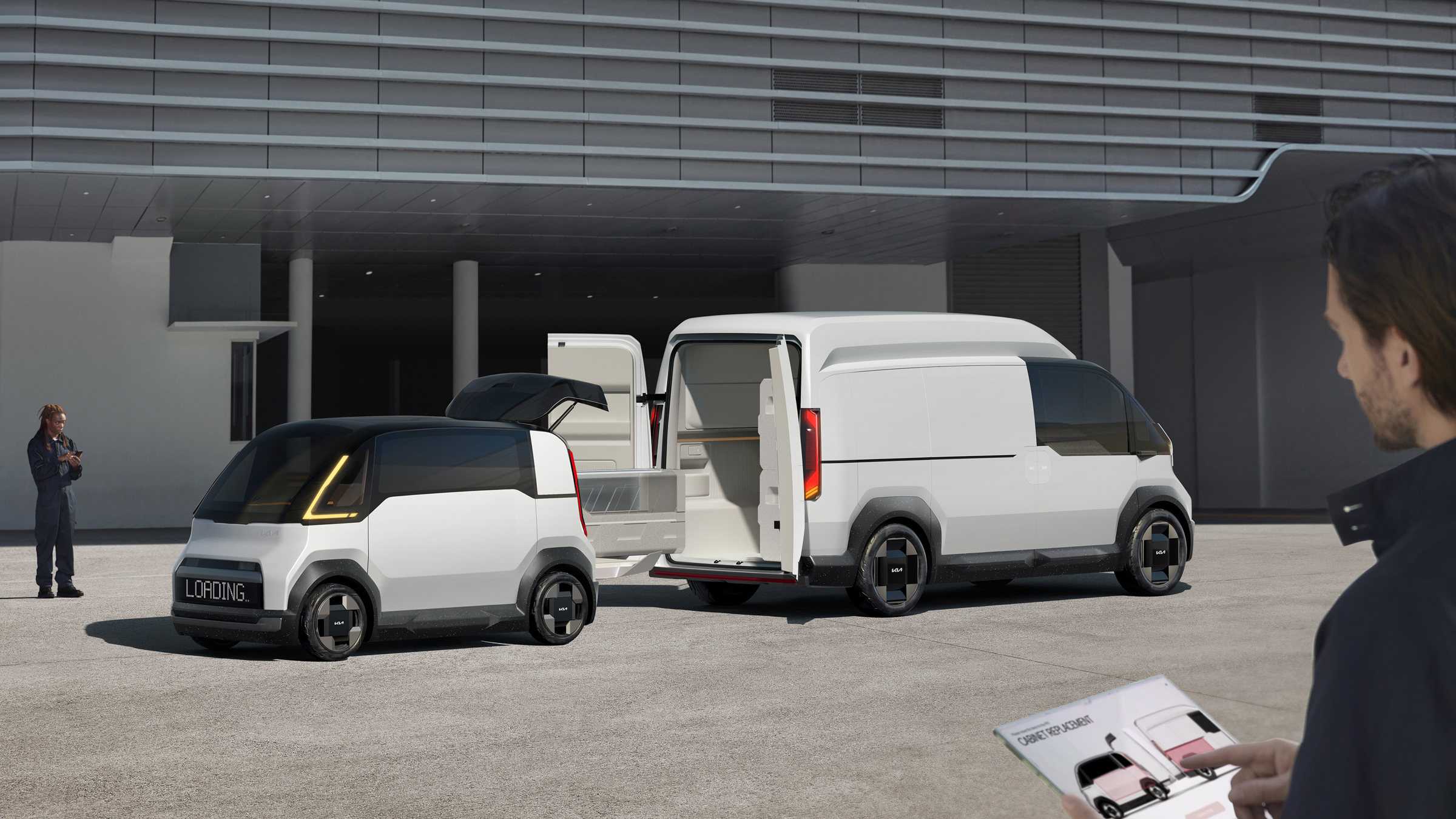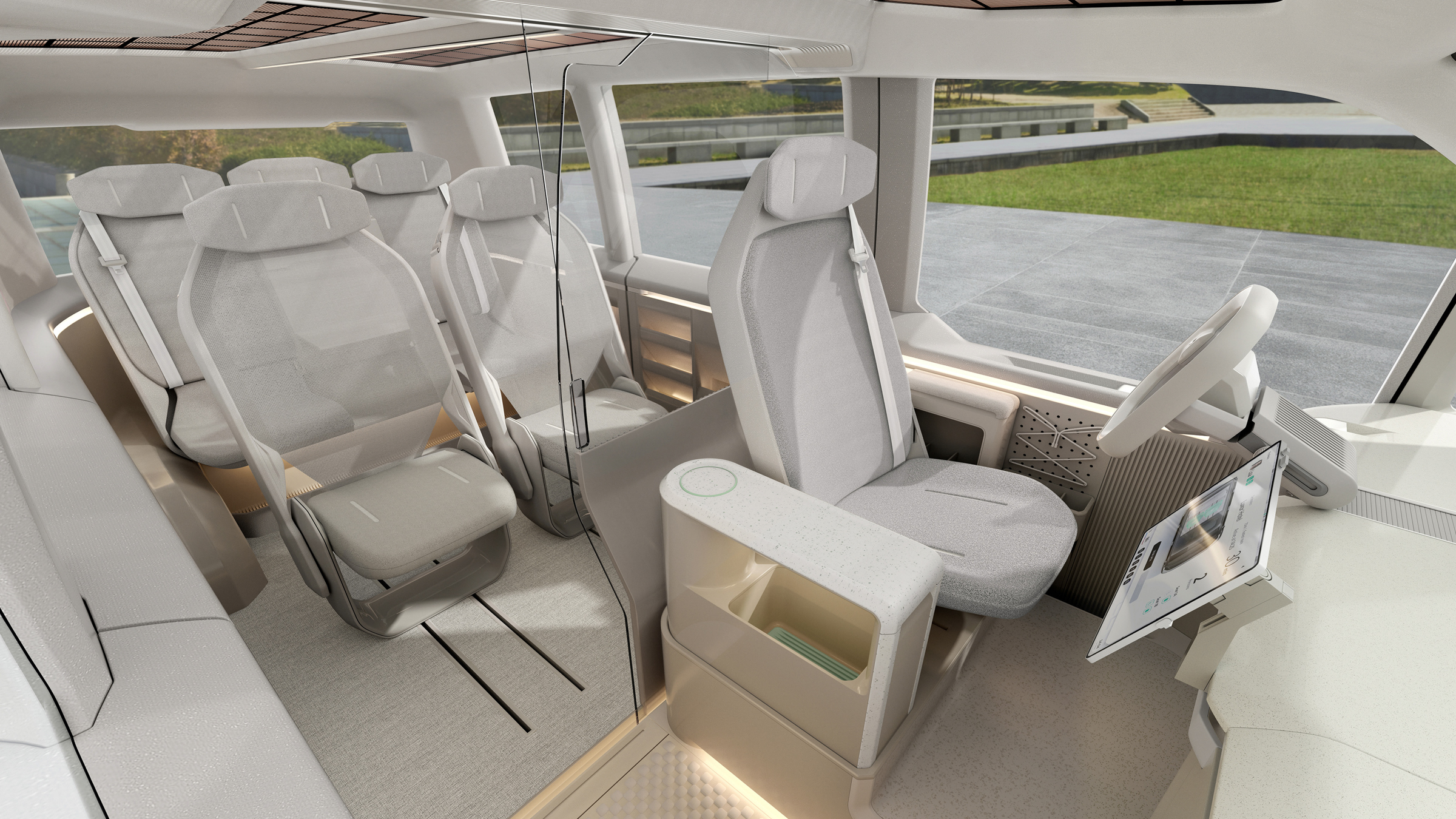Kia reveals modular, transforming electric van concept at CES
The family of modular Kia EVs transform from taxis to vans, and could even be driverless


We’re all familiar with electric cars, bikes and even buses, but what about everything else that shares our roads? What about the taxis, minibuses and delivery vans of all shapes and sizes?
This is where Kia’s new collection of PBV concept vehicles comes in. Sounding not dissimilar to something from Thunderbirds, the name is short for Platform Beyond Vehicle, and a set of PBVs have just been revealed at the CES technology show in Las Vegas.
All in concept form for now, but with the first commercial vehicles destined for mass production in 2025, the PBV range includes the smallest PV1, largest PV7, and three versions of PV5 in-between. They boast “adaptability that stands ready to answer every question,” Kia says, and they certainly look the part, in a practical-yet-futuristic sort of way.

Kia says the vehicles offer a blank canvas for business customers’ needs, but hasn't revealed any technical specifications or how much they are likely to cost. A three-phase road map will see the launch of the vehicles, followed by what Kia describes as advanced software and bespoke services to accompany them.
Like how electric cars tend to offer more interior space thanks to their simpler, more compact drivetrains, Kia’s PV utility vehicles claim to “redefine the concept of space”, with tailored interiors kitted out to best suit their users’ needs.
The vehicles’ modular design means their interchangeable bodies, which attach using electromagnetic and mechanical couplings, can be swapped out to fulfil different roles. For example, a PBV could operate as a delivery van during the day then turn into a taxi at night – or a recreational vehicle for personal use at weekends – all with the same driver compartment, chassis and drivetrain.

The PV5 will come first, with mass production starting next year. Kia describes the vehicle as “a versatile EV optimised for major domains such as hailing, delivery and utilities that features conversion capability for diverse customer needs.”
Get all the latest news, reviews, deals and buying guides on gorgeous tech, home and active products from the T3 experts
Kia doesn’t dig into specific use cases for the PV5, but says the vehicles can be connected to external data like route or delivery information, creating the ability to operate a “software-defined fleet”. For now, Kia’s concept vehicles include a steering wheel and pedals, but the company says it has plans to develop a PV5 robotic taxi capable of autonomous driving.

Autonomous delivery vehicles could also be possible, with Kia suggesting how Boston Dynamics’ dog-like Spot robot could be used in conjunction with a PV fleet to “enhance logistics automation”. In other words, Kia’s vision of the future includes a delivery depot where robotic dogs load goods into fleets of electric vans.
This would have sounded like pure science fiction a decade ago, but with Spot now commercially available and Kia's first vans due into production next year, delivery depots could soon receive an automation overhaul.
Back to the present day, and price will be a major factor for the Kia PBV range. Courier companies will need the figures to make sense before investing in Kia's high-tech alternative to the tried-and-tested Transit van, and they'll need to be convinced of the vehicles' transforming abilities before order books fill up.
Alistair is a freelance automotive and technology journalist. He has bylines on esteemed sites such as the BBC, Forbes, TechRadar, and of best of all, T3, where he covers topics ranging from classic cars and men's lifestyle, to smart home technology, phones, electric cars, autonomy, Swiss watches, and much more besides. He is an experienced journalist, writing news, features, interviews and product reviews. If that didn't make him busy enough, he is also the co-host of the AutoChat podcast.
